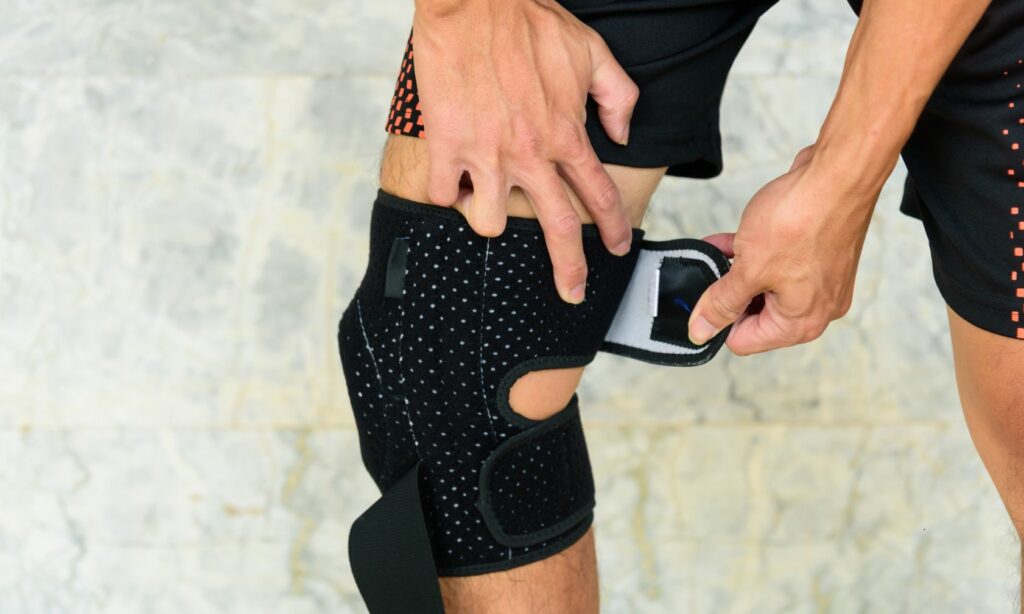What Your Running Form Says About Your Physiology
Your running form is more than just how you move — it's a reflection of your body's physiology.
Different running styles, like heel striking, midfoot striking, and forefoot striking, each interact in a unique way with your body. These forms can reveal a lot about your muscle strength, joint health, and biomechanics.
This kind of insight can help you enhance your performance and reduce your risk of injury. You'll be equipped to make informed adjustments to your training.
Let's explore how these common running forms can influence your physiological health and running efficiency.
The Basics of Running Mechanics
Understanding proper running form will help you optimise your performance and minimise your injury risk. Here's what you need to know:
Key Aspects of Proper Running Form
There are four key aspects that will help you optimise your running form: your posture, footstrike, cadence, and arm swing.
Your running posture should see you run tall with a slight forward lean from the ankles, not the waist. This helps with propulsion and maintaining balance. Hip position can also play a role, however it will vary from person to person.
Footstrike refers to the part of the foot that hits the ground first. Different foot strikes — your heel, your midfoot, or your forefoot — affect your body differently.
Sometimes referred to as stride rate, a good cadence maintains a consistent and appropriate number of steps per minute to reduce the impact force on your body.
Your arms should swing naturally from your shoulders in coordination with your leg movement, helping you drive momentum and gain balance.
Variability in Running Form
Running form varies from person to person, depending on certain factors. Physiology, i.e., body type, muscle strength, and flexibility, will impact how runners naturally move, but this is only the beginning.
Experience and training also play a big role as more experienced runners may have optimised their form for efficiency, while beginners are typically still developing their techniques.
This experience can come from self-exploration and finding out what works for you, but it can also come from working with a professional physiotherapist who can objectively analyse your stride to help optimise your form.
Physiological Implications of Running Form
Your running form is deeply connected to your anatomy and physiology, impacting your performance and your susceptibility to injuries. For example, stronger and more flexible muscles can enhance your stride length and running efficiency. On the other hand, weaknesses or imbalances can affect your movements and increase your risk of injury.
This is also true for joint mobility. Adequate mobility in your hips, knees, and ankles allows for a smoother gait cycle. Limited joint mobility tends to alter your running mechanics, potentially causing strain in other areas of your body.
A runner’s neuromuscular coordination is also important. Efficient coordination between your nerves and muscles can optimise your running form for speed and endurance. Poor coordination can lead to inefficient movement patterns.

Running Form, Performance & Injury
Studies suggest that runners who adopt a midfoot strike experience fewer injuries compared to those who heel strike. This is mostly due to reduced impact force on the knees and hips.
Elite sprinters often use a forefoot strike, which has been linked to better performance. You can thank more powerful propulsion and greater energy efficiency for that!
Research has also shown that heel strikers are more prone to shin splints and knee pain. This is likely due to the greater impact shock that travels up the leg at footfall.
Common Running Form Errors and Their Effects
Even small mistakes in your running technique can lead to serious physiological consequences. Understanding these common errors can help you make the proper corrections for better performance and a reduced risk of injury.
Common Running Technique Errors
There are some running errors that we see all too often, including:
- Overstriding: Landing with your foot too far ahead of your body's centre of mass. This typically leads to a heel strike that generates excessive impact force.
- Excessive Heel Striking: While it is natural for many, overly pronounced heel striking increases the shock absorbed by the joints, particularly in your knees and hips.
- Poor Posture: Slumping or leaning too far forward or backward disrupts natural spinal alignment, compromising your efficiency and leading to back and neck strain.
- Inadequate Arm Swing: Arms crossing over your body or swinging too high can waste energy and affect balance, altering your natural torso rotation and gait symmetry.
There is good news, however! Later in this article, we provide specific exercises to help correct these common running technique errors.
Physiological Consequences of Running Form Errors
Ineffective running techniques place additional and unnecessary stress on the body. This can manifest in three primary (and uncomfortable) ways.
Firstly, consistently running with less-than-ideal form can cause stress on your joints to the point of injury. Overstriding and excessive heel striking can lead to joint overload. This results in conditions like runner's knee (patellofemoral pain syndrome), shin splints, and hip bursitis.
Second, but closely related, are the muscle imbalances and strains that can occur. Poor posture and inadequate arm swing can cause muscle fatigue and imbalances. This can increase your risk of injuries and reduce your running efficiency, leading to overload issues such as achilles tendinopathy or plantar fasciopathy.
Third and finally is decreased performance. All these errors can lead to a less efficient running form, increasing the energy used and reducing your overall performance and endurance capabilities. Not to mention the frustration that can arise when you cannot see improvements in your times or distances.

Techniques to Analyse and Improve Running Form
Taking the time to analyse and improve your running form can seriously enhance your performance and reduce your risk of injury. But how do you know exactly what you’re doing right and what you can improve?
Here are some reliable tools and methods to analyse your running form, along with exercises to correct some common errors.
Tools and Methods for Assessing Running Form
Using slow-motion video to capture running mechanics can help identify issues like over striding or improper foot strike. This can be done from multiple angles to get a comprehensive view of your form and break down your running movements into their constituent details.
Additionally, you can also opt for gait analysis. This detailed assessment is usually conducted by physiotherapists experienced in sports and running form. It analyses how you run, identifying imbalances and inefficiencies that could lead to injury. Through a physio session at All Elite Physiotherapy, you can receive a detailed strength analysis using our state of the art VALD testing system, so nothing is left up to chance.
Finally, wearable technology, such as smartwatches and running sensors, can provide real-time feedback on your pace, stride length, and cadence. This will help you adjust your form on the go.
Exercises and Tips to Correct Common Errors
Remember those common running technique errors from before? Well here are some simple exercises you can do during or around your running to help optimise your form:
- For Over Striding: Practise shortening your stride while increasing your cadence. Drills like "bounding" or "butt kicks" help you develop a more efficient stride.
- For Heel Striking: Transition to a mid foot strike by running barefoot on grass or using minimalist running shoes during training sessions to encourage lighter footfalls.
- For Poor Posture: Strengthen core muscles with exercises. The best exercises for this will vary from patient to patient, but those such as planks and back extensions can improve overall posture. Running with a slight forward lean from the ankles, not the hips, helps maintain proper alignment.
- For Inadequate Arm Swing: Perform arm swing drills with your arms moving forward and back, close to the body, with your elbows at a 90-degree angle. This will enhance your balancer and reduce torso rotation.

Perfecting Your Form for Optimal Running
Understanding and refining your running form will help you enhance your performance and minimise your risk of injury.
From posture and footstrike to stride and arm swing, every element plays a role in how effectively and safely you run. Using tools like video and gait analysis can help you pinpoint areas for improvement, while specific exercises can correct common errors in form.
Don't wait for pain or injuries to tell you something is wrong. Take action now to assess and improve your running form.
At All Elite Physio, you can consult with one of our physiotherapists and start making meaningful changes today.
Reach out to us today and find out how you can optimise your running experience!
